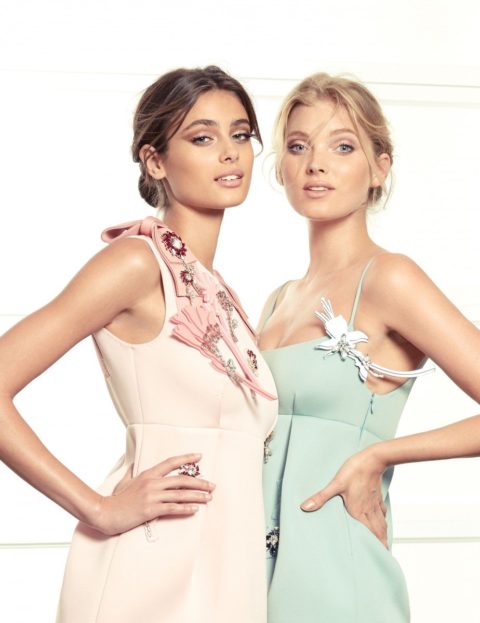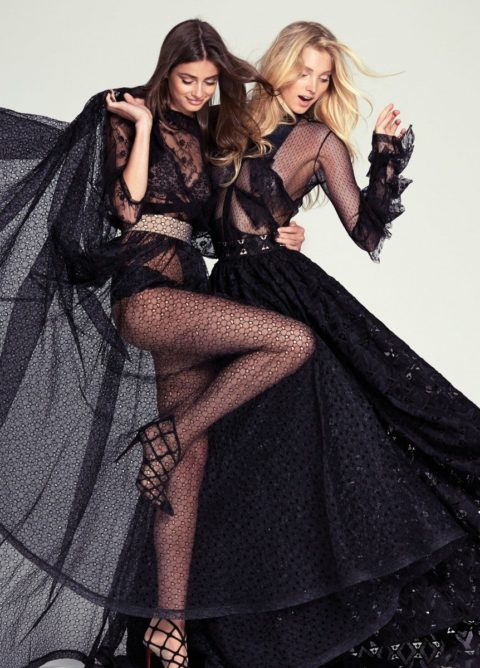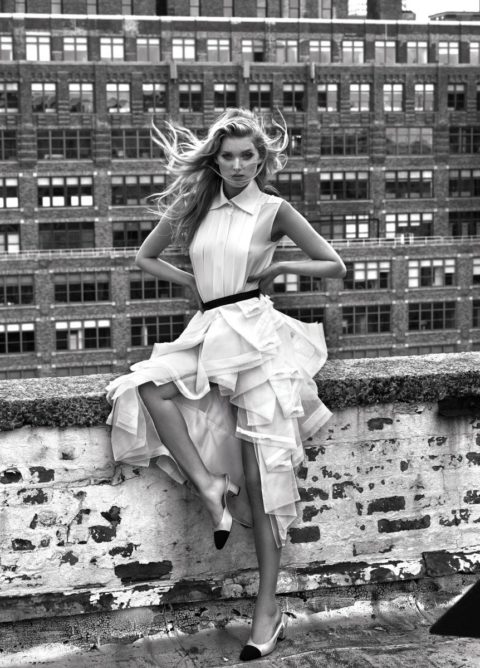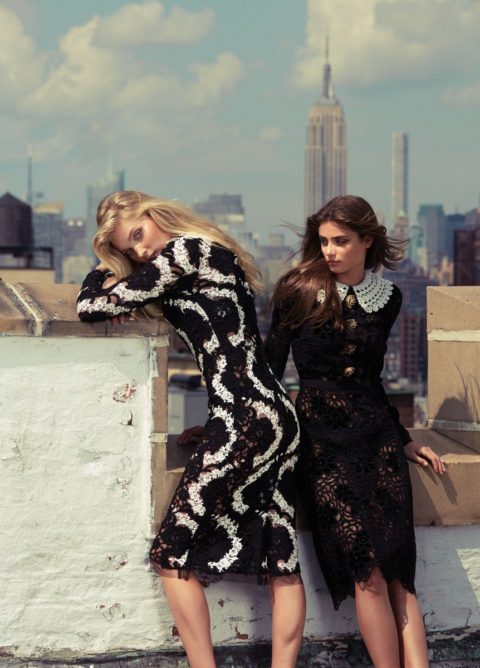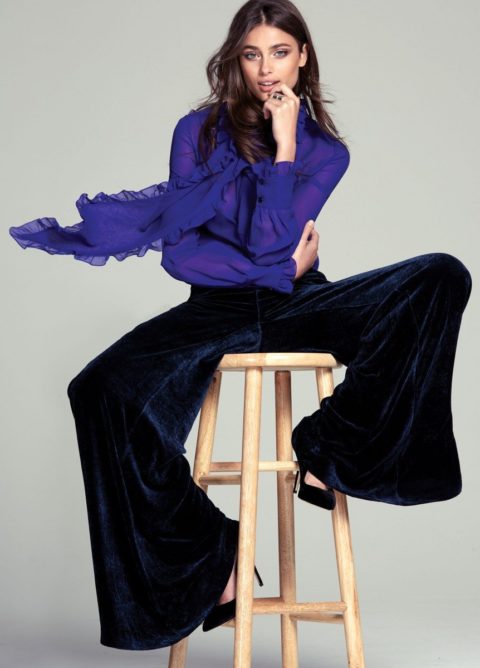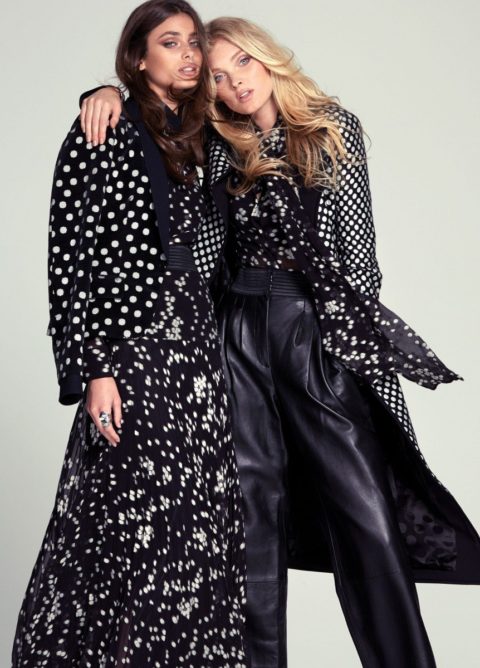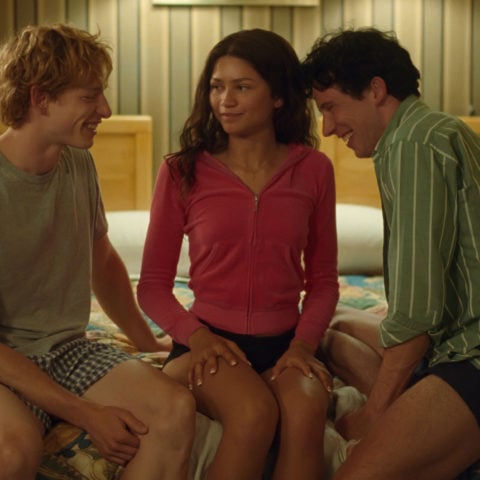Our complete fashion shoot with Victoria’s Secret Angels Taylor Hill and Elsa Hosk
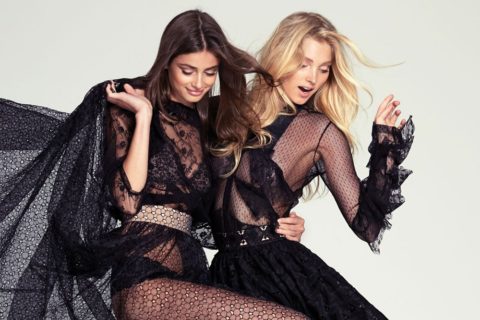
“I don’t want to be just another face and I don’t want to just ‘be’ amongst the crowd.”
These are the words that 19-year-old Taylor Hill, the youngest model to get her Victoria’s Secret Angel wings this year, is spouting under a sizzling-hot curling iron. “I want to be better than Gisele Bündchen!” exclaims the Colorado-born beauty, who is prepping to be photographed for FASHION’s September issue alongside fellow Angel Elsa Hosk (both star in the new Body by Victoria campaign). They’re sitting two metres apart in a photo studio that borders New York’s SoHo. While Hosk flips through iPhone photos as the blow-dryer blasts her blonde locks, Hill gets personal.
“I’ve lived so much of my life in a spot like this,” Hill says, circling her index finger around the frenzy of hairstylists and makeup artists. “So many important moments happen when I’m getting ready for shoots or runways or campaigns, so it makes sense that I’d be talking about my life here. It’s become a therapist’s couch!”
The energy that Hill emits from her swivel chair is unbridled but not uncouth. Although she didn’t have a typical high school experience and never attended her own prom (“thank God I didn’t get to go—I feel like I got to skip a lot of personality-damaging things from high school,” she says), Hill reflects the poise of a southern belle and the gumption of a fashion industry veteran. When asked about the most important lesson she’s learned since she started working five years ago at age 14, Hill replies: “You are taught to respect your elders, not to speak out and to do as you’re told. But I found out really quick that it’s important in this industry—and in life—to speak up.” Knowing that she had the power to accept or decline jobs made her better at work. “I was always afraid to ask if I could have water or anything because they were adults and I wasn’t. That has changed,” Hill says, noting that Sophia Amoruso’s book #Girlboss was a catalyst of sorts. “[The book] helped me transition in my career and helped me grasp that ambitious mentality you need. There’s this transition from being a model to a supermodel. You kind of have to act a certain way to get people to recognize you. You’re not a kid anymore, and [people] need to know that. You can say things like, ‘You can’t talk to me like that; I’m not like everybody else.’”
Getting to Hill’s place of self-assurance may have taken half a decade (“I cried like a baby after falling at a Kaufman Franco show—won’t do that again!”), but she’s had the help of many luminaries along the way. She was discovered by an agent at a dude ranch in Granby, Colo., while on a family vacation, but shortly afterward, it was Donatella Versace who took an early interest in her (“She doesn’t know this, but I owe her my career,” says Hill). Versace gave Hill her first of many runway shows for top fashion labels (and featured her in Versus Versace’s Fall 2015 ad campaign). “When you get to walk in a show, [designers] see you as a muse of their brand. It’s an honour,” says Hill.
Like Hill, Elsa Hosk’s rise in fashion started at 14. When she was a teen, her father brazenly sent photos of his whole clan to various modelling agencies in Sweden (Hosk’s home country). Two of them ended up signing Hosk without knowing it, and she worked for both agencies before they caught on. “At the time, I had corkscrew locks and this chubby face and braces,” Hosk says, bewildered. “I was like, ‘I can’t be a model!’ But these agencies were like, ‘Yeah!’”
It wasn’t long before Hosk was booking work for established houses like Christian Dior, Giambattista Valli and Emanuel Ungaro. It was then that she realized her extracurricular sports helped her stand out.
“Being a basketball player helped me so much in this business,” she says of her former life as an all-star dribbler in Sweden’s national league. “It made me a team player and it’s easier to adapt to the world of posing. When I model, I use every single muscle in my body. Being fit and physical lets me know that control.”
Among the most collaborative projects Hosk has worked on—aside from Victoria’s Secret—is a series of indie shoots with photographer Guy Aroch. “We did photographs for two years,” she says. “It would be just us meeting up once a week or on every shoot we were on. We went to [places like] Paris and Tokyo. I was styling myself in it and doing my own hair—it’s very ’70s inspired. It felt so liberating.” Some of the clothes were taken from Hosk’s own closet, as she collects vintage Levi’s (her greatest vintage treasure, however, is an Ossie Clark silver lamé dress). For one shoot, Hosk decided to push the boundaries of what she does commercially. “I was completely nude on a skateboard and I was wearing this long fur cape—it was in the middle of the night. I was skating through Tribeca,” she says.
Over the years, Hosk has come to know her style and what works on her body. What doesn’t work? The perception that models are cold, pampered types who need rely only on their looks to get by in the world. Hosk goes out of her way to learn where the crew is shooting next and takes the time to answer any questions they may have.
“It’s something I learned from Rihanna,” Hosk says nonchalantly when asked about the importance of busting out the pleasantries. “When I met her at the Victoria’s Secret fashion show, she was really cool. She was just so friendly and wanted everybody to get a selfie with her. She wasn’t rushing. She was looking everyone in the eye, talking to everybody, making everybody feel comfortable.” Hosk’s biggest hero, however, comes from the world of film. A few years ago, when she saw a film about sex trafficking, called The Whistleblower —which stars her idol, actress Rachel Weisz—an alarm went off.
“It changed my life. I knew this is what I wanted to devote my free time to,” she says of the true story about a police officer who uncovers a Bosnian sex scandal involving teenage women. “I can’t imagine a more horrific fate for a young girl. Afterward, I went straight to Washington, D.C., and met with an organization and with survivors of human trafficking.” Her extensive research led her to wonder: “How can trading human life be a bigger industry than the one I’m in? It’s mind-blowing.”
Hosk says homesickness is a side effect of having a bustling career. And it’s easy to imagine why when you hear her describe life in Sweden. “I miss the archipelago, the islands outside of Stockholm, the most,” she says. “That’s where I spent my summers as a kid. Going on a boat and island-hopping. In August, we have a crayfish party. You get fresh crayfish from the ocean and then you put all these lanterns in the garden and invite the entire neighbourhood to celebrate.”
Admittedly, the perks of donning the golden Angel wings help balance out the constant travel and rigorous schedule. “I know I have one of the best jobs in the world,” says Hosk. “These days, models are allowed to have bigger personalities and be celebrities on their own. We have platforms now on social media, [so] there’s a way for us to get our faces and messages out there, especially with VS—they encourage that. Natalia Vodianova is a model who always did it right. She was able to just put her personality out there, and I try to do that all the time. That’s why I love this [job]. It allows you to be unique and create your own path.”

